Stories > No Rules For Repair
No Rules For Repair
Singaporean and British designers collaborate with members of the public to reinterpret a collection of damaged items.
BY SHWETA PARIDA
PHOTOS ZUKETA FILM PRODUCTION
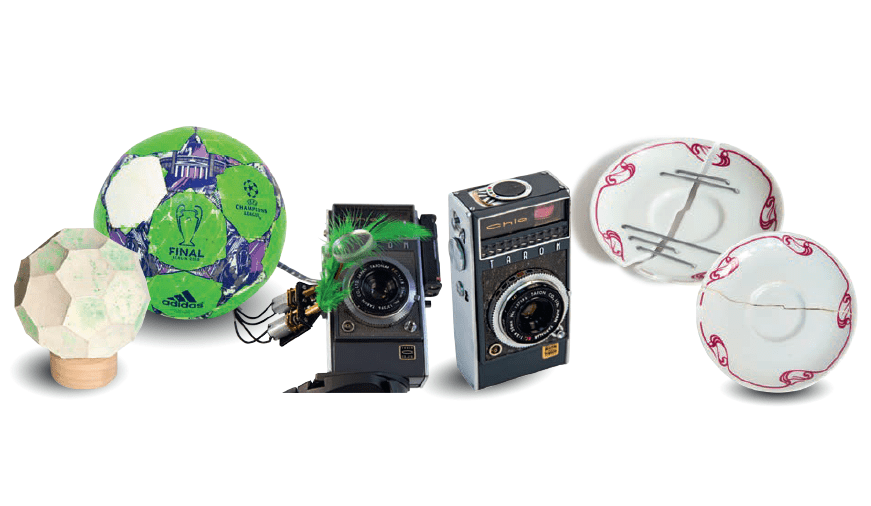
British designer Thomas Thwaites transformed the favourite football of Singaporean Kason Tan’s late dog; local designer Syafiq Jubri restored the analog camera of the late grandmother of Briton Rachael Hymas; a porcelain saucer pinched by French actress Jane Birkin from the iconic Maxim’s de Paris restaurant was repaired by Singapore’s Studio Dam.
football from the UEFA Champions League 2015 Final chewed out by a canine. A broken saucer pinched by the legendary actress Jane Birkin from the iconic Maxim’s de Paris restaurant back in 1975. These were just two of the 10 items that were featured in the collaborative R for Repair initiative between award-winning Singaporean designer Hans Tan and renowned British curator Jane Withers.
The idea for the project began serendipitously. Just before the onset of the Covid-19 pandemic, Tan – also a professor at the National University of Singapore (NUS) – had conceptualised a project based on the theme of repair for his students at the department of industrial design. The idea? To select a few damaged goods, come up with an innovative repair process and, finally, create a repair kit that could be reproduced.
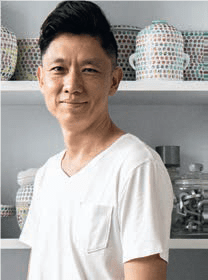
“When you go down to a personal narrative and look at things belonging to people and not through the lens of nationality or race, the differences start to dissolve.”
Hans Tan, Singaporean designer and academic
With the lockdown caused by Covid-19 and many designers out of commission, Tan started thinking about showcasing the repaired items to a wider audience, in the hopes of starting a conversation about the repair culture.
With the support of the Design Singapore Council (DSg), the national agency that champions local creative industries, Tan proposed an exhibition titled R for Repair. He invited 10 established local designers alongside 10 of his students to participate in the project.
He explains that following an open call, asking members of the public to send the team damaged items with a story behind them, they received a number of entries. Each object was then matched with the skill sets of the participating designers, who came from different disciplines such as product, graphic, furniture and marketing.
While some items needed complex repairs, others were more basic – such as mending holes in shoes, toys or clothing. “We gave them the freedom to decide what their interpretation of the repair work could be,” says Tan. “This compelled them to take a fresh approach towards these objects.”
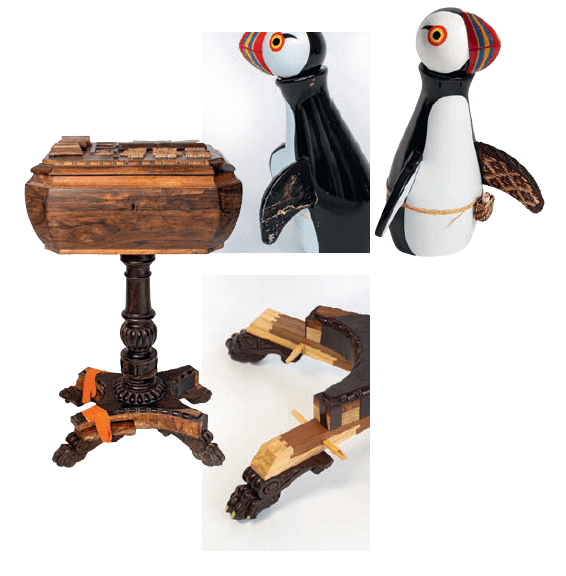
Briton Oli Stratford’s classic wooden toy was repaired with rattan and thread by Singaporean Ng Si Ying; Rio Kobayashi used Japanese joinery to repair the 18thcentury sewing machine of Eleanor Suggett Stephens’ grandmother.
GOING GLOBAL
The thought-provoking exhibition garnered global praise. From seminal US design publication Metropolis to the UK magazine Icon – the international press described it as an emotional project that aims at sustainability and collective responsibility. The team started thinking about taking the showcase overseas. “It was a moon shot and I was not prepared to do a second edition because it had taken a lot of work to organise the first one,” recounts Tan.
Not expecting the project to go ahead, Tan told DSg that if an international edition of the exhibition were to be considered, there were only two places that would give the project its due prestige. “It was a choice between the Design Museum and the Victoria & Albert (V&A) Museum – both based in London and best suited for the subject matter,” he says. “This was my condition to go ahead with the exhibition. After all, if we want to showcase Singapore design overseas, we have to set a high benchmark.”
Through a mutual contact, he was put in touch with the V&A curators, who were keen to pursue the collaboration, having seen the first edition. “We also secured the well-respected British curator Jane Withers, who expressed her interest to co-curate the sustainability-focused show,” he says. “To my surprise, the stars aligned perfectly. We were lucky to get Jane on board.” The UK edition, titled R for Repair: London X Singapore that launched during the London Design Festival in September 2022 and ran till early November, featured a selection of 10 items by four Singaporean and six British designers as well as three objects from the original exhibition in Singapore.
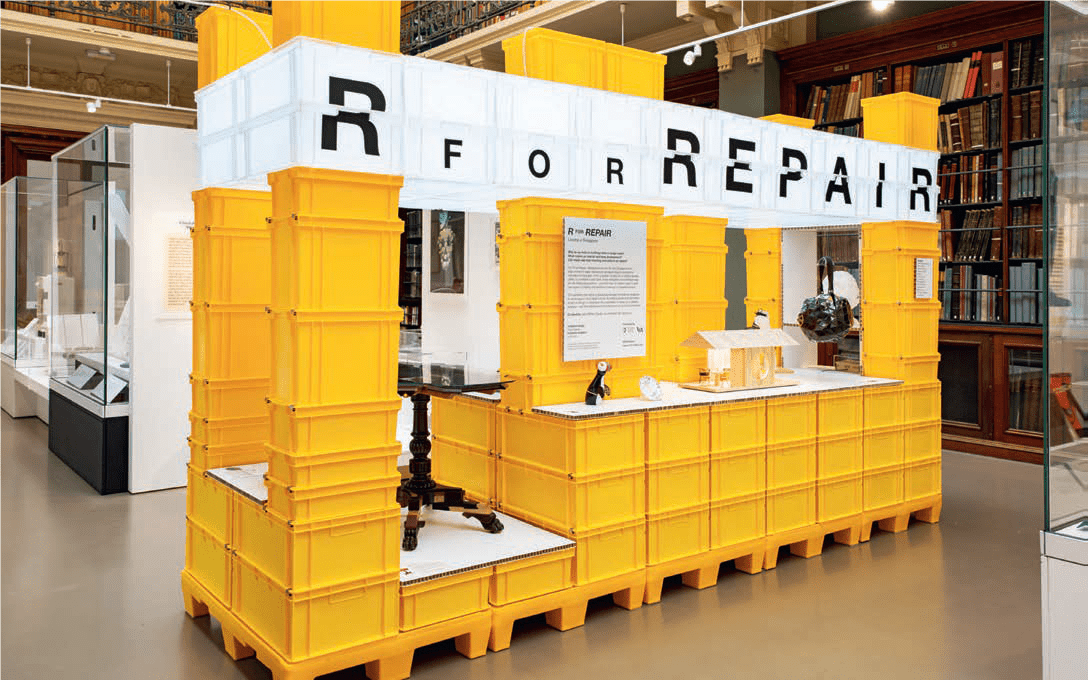
The exhibition R for Repair featuring 10 exhibits by Singaporean and British designers was launched during the London Design Festival 2022.
CONVERSATION-FUELLED CREATIVITY
Tan shares that while selecting the designers, he and Withers focused on the participants’ cultural mix. After reviewing the designers’ portfolios, the co-curators matched them with objects in the reciprocal country – Singaporean designers had to repair objects belonging to British members of the public while the British designers worked on items submitted by Singaporeans. People could submit any item so long as it had a story to tell.
The football from a past UEFA Champions League final, for instance, belonged to Singaporean Kason Tan, or rather, his late dog, a Shih Tzu called Lucky. “It has his bite and chew marks all over it,” reminisces Tan. To commemorate the life of Lucky, British designer Thomas Thwaites fixed in “stone” the marks the canine left behind. He unstitched the ball to create a cast – turning it inside out and pouring plaster into the opening to capture the shape, indentations and green flakes from the original football.
Another item was a ’60s Japanese analogue camera belonging to Briton Rachael Hymas’ grandmother, who travelled across Europe for 22 years with her husband in a camper van. Hymas did not think that the faulty device could be restored to full functionality but wished to preserve it as a keepsake.
To her surprise, Singaporean designer Syafiq Jubri gave new life to the camera by mending the mechanical fault in the gear assembly. Challenging the idea of the camera as a “perfect translator of light”, he added a rotating mirror that captures blind spots and a green feather that “tickles the light” to give the photographs a more playful and spontaneous character.

EMPATHY REDUCES THE DISTANCE
The co-curators had a condition that owners must give creative freedom to the designers and place their trust that the latter will be respectful towards the items. “However, we were concerned that the exchange will encounter challenges in terms of the UK designers repairing objects from Singapore and vice-versa due to cultural differences,” admits Tan. “It is because the designers are not just working on the objects in and of themselves, but they are also looking at the stories behind them, which are more important than the objects themselves.”
“In the Singaporean designers, I saw the penchant for innovation and a desire to keep working until they arrive at the best outcome.”
Jane Withers, British design consultant and curator
Yet, Tan and Withers came to realise that the designers’ understanding of the sentiments behind the objects was not the most critical issue at all. “When you go down to a personal narrative and look at things belonging to people and not through the lens of nationality or race, the differences start to dissolve,” shares Tan.
TRUST AND INSTINCT
For Singaporean designer Ng Si Ying, mutual trust was the most important factor. Using traditional rattan weaving technique, she repaired a puffin – the contemporary edition of a 1954 classic wooden toy designed by the renowned Danish silversmith and designer Kay Bojesen – submitted by British participant Oli Stratford. “Even though Oli did not have a say in the selection of the repairer for his puffin, it was reassuring to be fully trusted,” she shares. “In return for his faith in my work, I wanted to repair the object well.”
British designer Attua Aparicio Torinos agrees. “Working with a different culture, with different values and aesthetics, is very enriching. It is also rare to be given the opportunity to work in such an intimate way and be trusted with precious belongings of total strangers,” she says.
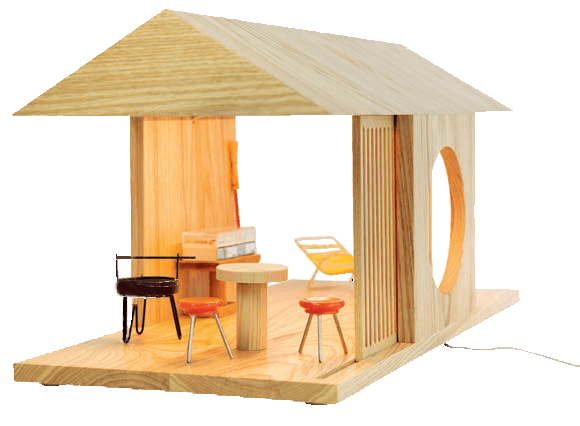
Briton Charlotte Philipps’ ’60s vintage dollhouse furniture collection is housed in a wooden dollhouse with sliding doors designed by London-based Studio Supermama.
The professional and cultural insights gained extend to the curators of the project. Tan admits that while he had done some shows in Singapore, they were largely academic and he did not have similar international opportunities. “Even though Singaporeans are used to working in a methodical manner, Jane was doing it on a much larger scale – and for public consumption,” he says. “I learnt from Jane how they work not just with the participating designers, but also with graphic and exhibition designers and photographers. I also learnt how even the smallest details such as copywriting, public relations and positioning come together.”
On her part, Withers – who has curated an extensive repertoire of international projects – came away impressed by both Tan and the participating Singaporean designers. “I have been to Singapore many times and have always marvelled at the level of innovation and how the city functions as an exemplary urban model – the Gardens by the Bay, for example, is perfection exemplified,” she points out. “In the Singaporean designers, I saw the same penchant for innovation and a desire to keep working on it until they arrive at the best outcome of their task.”
